| Mixed coniferous forests
|
||
Diverse conifers and others |
||
|
The mixed coniferous zone is the most biodiverse region of Burns Bog. It houses the greatest diversity of mammals and is home to many trees, shrubs and mushroom. This picture is taken in the Delta Nature Reserve on the eastern edge of the Bog. Part of the DNR is a transition zone between a bog and a forest. Tall coniferous trees grow in this region. Of course, many other species are found here. Click on the image for an enlarged picture. You will see the biodiversity in such a small field of view. Note that none of the species here is bog species. However, this is not to say that the mixed coniferous areas are not important in bog ecology. This zone buffers the Bog from the surrounding ecology. If the mixed forests are disturbed, the transition zone would probably recede further into the Bog. |
|
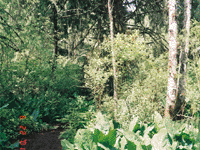
|
| Back to Top | ||
|
Both Sphagnum moss and Skunk cabbage grow in waterlogged condition. The presence of both of them on this photograph tells you that this site is wet. They are indicator species because their presence tell you something about the ecosystem. But sometimes indicator species give you confusing signals. Sphagnum moss grows in nutrient-poor condition, whereas Skunk cabbage likes lots of nutrients. An ecosystem is often more complex than we think. |
|
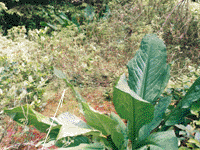
|
| Back to Top | ||
|
This is a typical disturbed site. Tall red alder trees and many different species of wildflowers are good indication that you are in a disturbed zone of the Bog. |
|
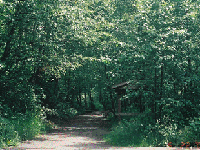
|
| Back to Top | ||
|
This is a tree trunk of a western hemlock tree. The holes on this trees indicate that the Red-breasted Sapsucker has used it. |
|
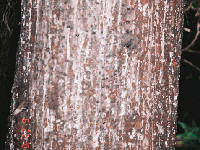
|
| Back to Top | ||
|
This is the edge of the mixed conifer forest on the western edge of Burns Bog. This narrow piece of forests stand between the main Bog and Crescent Slough, which is only about 400 meters behind these trees. Weeds and wildflowers dominate along this hog fuel trail, similar to many other disturbed areas of Burns Bog. |
|
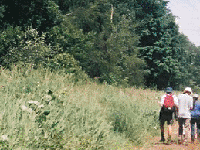
|